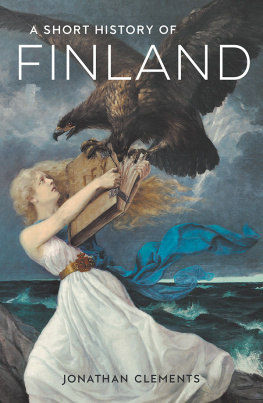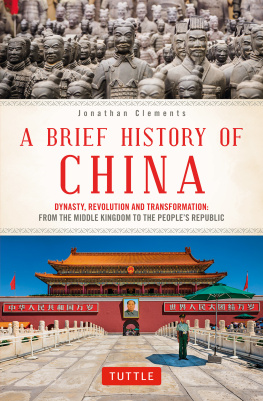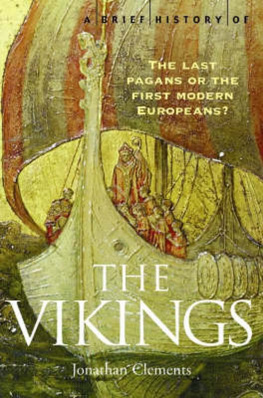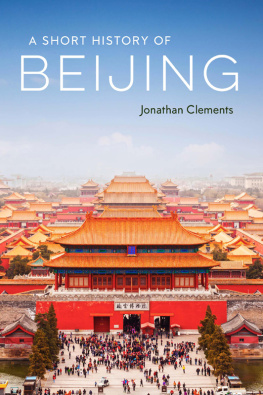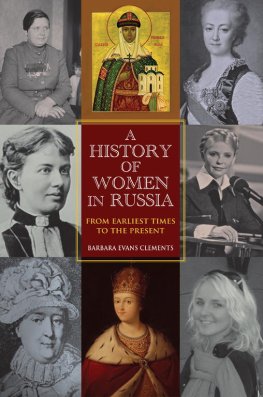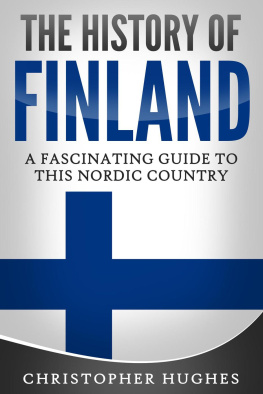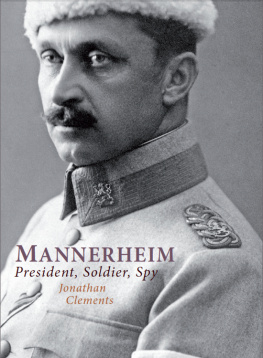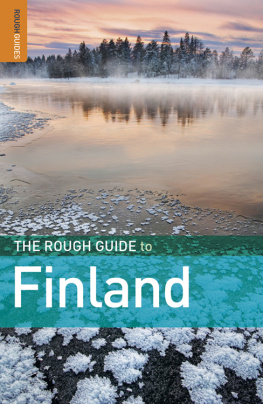
A Short History of Finland
JONATHAN CLEMENTS is the author of a biography of Finlands most famous leader, Mannerheim: President, Soldier, Spy (Haus, 2009), as well as A Brief History of the Vikings (Robinson, 2005) and An Armchair Travellers History of the Silk Road (Haus, 2013). After living in Finland for over a decade, he became a Finnish citizen in 2021.
Sections of this book were first published under the title
An Armchair Travellers History of Finland in 2014
This revised and updated paperback edition first published in 2022 by Haus Publishing Ltd, 4 Cinnamon Row, London sw11 3TW
Copyright 2022 Jonathan Clements
The moral rights of the author have been asserted
A CIP catalogue record of this book is available from the British
Library
ISBN: 978-1-913368-65-4
eISBN: 978-1-913368-66-1
Typeset in Garamond by MacGuru Ltd
Printed in the United Kingdom by Clays Ltd (Elcograf S.p.A.)
All rights reserved

For Tara
Contents
T hanks to all those many Finns who have spoken to me about their country over the years, including those many anonymous guides and curators who were unable to resist recounting a few local stories for the mysterious visitor. Thanks also to my two Finnish beta-readers and fact-checkers, Tino Warinowski and Johanna Ahonen, who have done their best to stop me from libelling anyone. Other people who have contributed in some way to this book include Talvikki Aalto, Andrew Deacon, Harry Hall, Aino Haponen, Sanna Heikkinen, Nico Holmberg, Minna Janhonen, Risto Karinkanta, Kirsi Kainulainen, Pekka Kejo, Vantte & Elina Kilappa, Pekka Komu, Jussi Komu-lainen, Noora Lahtinen, Aleksi Laine, Teemu & Anna-Leena Korpijrvi, Lasse Lilja & Kaisa Aherto-Lilja, Elina Mattila, Samy Merchi, Jani Moliis, Kari Mki-Kuutti, Kirsi Mki-Kuutti, Matias Mki-Kuutti, Pekka Mki-Kuutti, Raija Mki-Kuutti, Timo & Seija Mki-Kuutti, Vitas & Jenni Mki-Kuutti, Hanna Mnnikklahti, Eija Niskanen, Raino & Elina Ojala, Anniina Ouramaa, Ritva Oolannin Sota Parkkonen, Michael Perukangas, Juuso Pesl, Anna Pitknen, Marita Pynnnen, Salla Ps, Ive Riihimki, Timo Riitamaa, Tuomas Saloniemi, Mari & Mikko Saario, Ellie Shillito, Leena Tarjamo, Anu Uhtio, Niklas Vainio, Harri Virtanen, Myry Voipio, Olli Vlke, and Marita von Weissenberg.
In the most convoluted tale of emigration and return, there is the matter of one Heikki Piiparinen, who fled Joensuu in 1917 for a better life in the United States, and never returned home. Instead, he worked at a copper mine, staying at the Finn-run Nikula dormitory in Hancock, Michigan, eventually marrying one of the Nikula girls. Seventy years later, the couples great granddaughter, Emily Carlson, born into an English-speaking family on the out-skirts of Detroit, would discover that she could get cheap tuition in Finland while Googling her ancestral home, return there for her postgraduate degrees, and ultimately became a Finn, shortly before marrying me. Our daughter, Tara, born a Finnish citizen in the last month of 2022, is the latest inheritor of her nations varied and vibrant history.
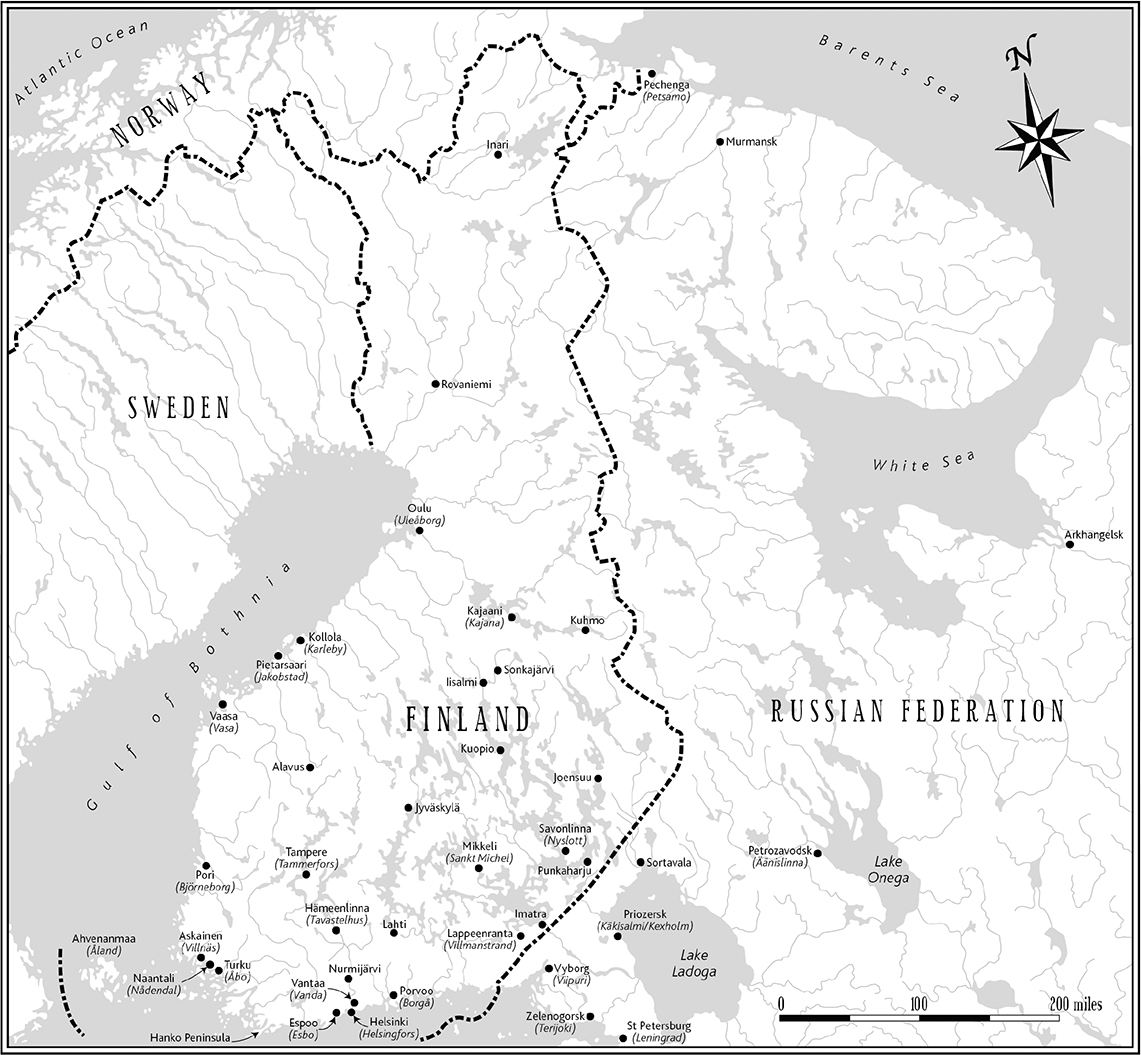
T he painting hangs in the Kansallismuseo, the National Museum in Helsinki. It depicts a flaxen-haired girl in a white dress and blue scarf on a desolate, storm-tossed shore, clutching a massive book of laws. She is hanging on to it for dear life, while a double-headed eagle attempts to snatch it from her. The eagles attack is already ripping the pages and warping the cover; its not clear whether the book or its owner will survive this assault.
The painting is Hykkys (The Attack), completed in 1899 by the thirty-four-year-old artist Edvard Eetu Isto. The story goes that he began work on it in Berlin, but deliberately made the finishing touches in his Finnish homeland, the plight of which he was very pointedly symbolising.
The girl in blue and white is the Maid of Finland, a nationalist icon born in part from the shape made by the country of Finland itself, thought by some to resemble a girl in a dress with her arms outstretched. Her clothes invoke the blue cross of the countrys thousands of lakes, on the white snowfield of the Finnish flag. The double-headed eagle represents Imperial Russia, the Tsar of which had also held the position of the Grand Prince of Finland. And the book of laws it is attacking represents almost a century of cordial rulership, in which Finns within the Russian Empire were allowed to use their own language, their own currency, and a limited form of autonomous self-government. Things were changing, and would never quite be the same again.
Hykkys was a stark piece of propaganda, part of a massive upswelling of Finnish nationalism that gripped the country in the late nineteenth century. It would end, eventually, in the revolution of 1917, in which Finland became the only former territory of the Russian Empire to evade Soviet takeover.
For the historically minded reader in search of insight into Finland and the Finns, Hykkys and the National Romantic sensibility that birthed it are part of a pivotal moment. Its artists and authors wrestled with the very nature of Finnishness, a concept that had often been ignored or glossed over by two sets of foreign masters. This book similarly follows the Finns own developing sense of themselves, from hunters and crofters regarded as little more than savages by conquering Swedes, to the initially loyal and welcoming subjects of the Tsar after the Grand Duchy was handed over to Russia. It continues through the turbulent twentieth century, in which Finland was born from the fires of revolution and a bitter civil war, only to be forced to fight for its life in the Winter War, the Continuation War, and the Lapland War.
Because Finland is such a young country, many of its heroes and icons are relatively recent creations. A traveller among the Finns will often spy elements of Swedish or Russian culture, which no Finn will ever believe could not be ineffably Finnish, but also traditions that are less remembered than they are invented or recreated. Paramount among them is the Finnish national myth, the Kalevala , one of the first and most influential of many European epics to appear in the nationalist nineteenth century.
With a notoriously difficult language, a legendarily stubborn population, a political scene that aspires to socialist utopia, and international fame for sitting naked in hot, steamy sheds, the people of Finland have an odd reputation. But with the aid of this book, you will see much more of Finland and the Finns you will hear their own jokes about themselves, and read the words of their songs, and understand the way they view the world.
It has been two decades since I first accidentally went to Finland and inadvertently stayed, eventually becoming a Finn myself. When I was asked to write a history of the country, I set about writing a book that covered the subjects I wish I had known about before I arrived. This book was the result, first published in hardback in 2014 as An Armchair Travellers History of Finland .
For this paperback edition, I have taken the opportunity to expand several sections with new stories, particularly about the fortunes of two very different groups of Finns abroad, those who went to North America, and those who went to (or found themselves in) Soviet Russia. Their story has its links and resonances back home in their fatherland, not least in the way it forms an invisible lobby in those other countries, influencing the attitudes of two large foreign powers towards a small and supposedly insignificant nation.
Next page
